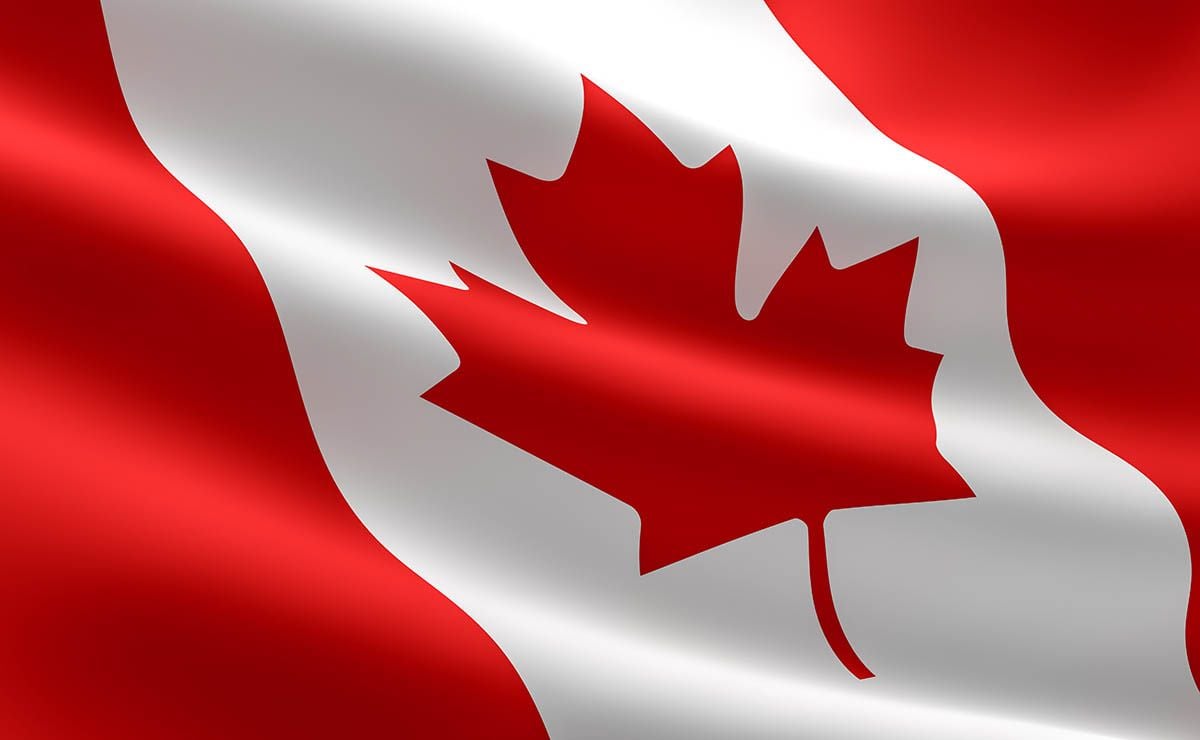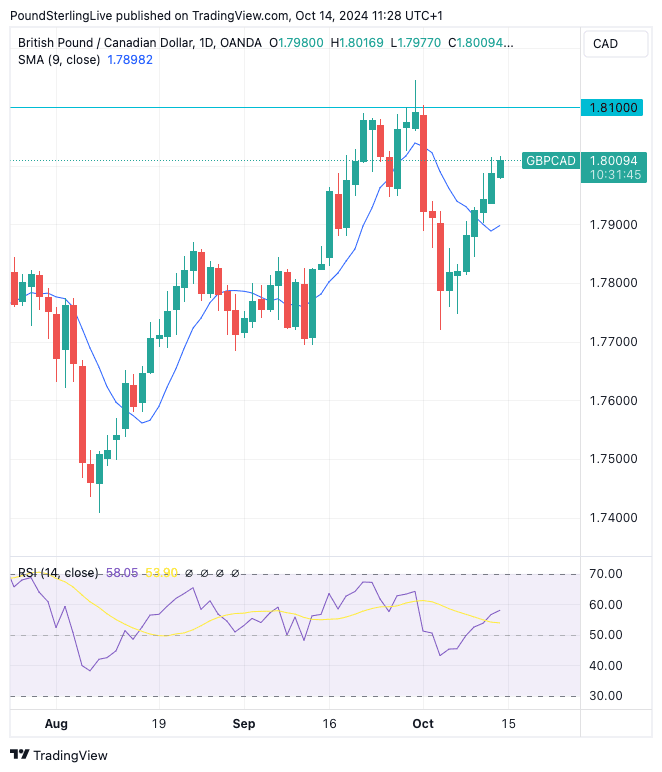
Image © Adobe Stock
The Pound to Canadian Dollar exchange rate (GBP/CAD) is forecast to maintain its broader uptrend in the coming days.
Pound Sterling rose nearly a per cent last week as it kept a solid trend of appreciation alive and partly overturned the sharp fall (from 1.8146 to 1.7719) experienced in early October.
The setback came amidst a rebound in the U.S. Dollar, to which GBP/CAD has at times been sensitive to, and a build-up in expectations that the Bank of England might accelerate progress on cutting interest rates.
Bank of England interest rate expectations are back in focus this week as the UK releases key data covering the labour market and inflation, which could deliver a couple of red candles on the daily chart.
However, GBP/CAD technicals advocate upside and any disappointments in the data would likely prove relatively short-lived.
A look at the daily chart reveals the RSI is positive at 58 and is pointed higher, confirming positive momentum.
The suite of daily moving average indicators are all positive and advocating for gains.
Graphical resistance comes in at 1.81, which is about where the September rally failed and reversed, forming a level that is likely to be targetted in the next five days.
Above: GBP/CAD at daily intervals.
CAD underperformance looks relatively universal at this point, with the Loonie having lost value to all its G10 rivals over the course of the past week, a period covered by the Canadian jobs report, out Friday.
"While jobs were added, a large pool of the labour market is struggling to secure work, and many are dropping out. The reality is that growth is still too weak to generate a sustained labour recovery and with inflation responding to slack demand the Bank of Canada has room to continue cutting interest rates," says Sam Hill, an analyst at Lloyds Bank.
Canada added 46.7k jobs in September (above the 27k expected by the market), adding to August's 22.1k gain.
This helped push the unemployment rate down to 6.5% from 6.6%, whereas the consensus looked for an increase in the unemployment rate to 6.7%.
"There are still troubling signs under the hood... although the overall unemployment dipped — due to a decline in the 15-24yrs category and among older workers — prime unemployment (25-54yrs) continued to rise," explains Hill.
The data means the Bank of Canada remains one of the most proactive central banks when it comes to cutting interest rates, and this can weigh on CAD.
As mentioned, GBP/CAD gains are not a guarantee this week owing to important UK data that will determine whether the Bank of England follows a looming November rate cut with a subsequent move in December.
At present, December is a toss-up, but weak wage data on Tuesday and soft inflation data on Wednesday can greenlight a second consecutive cut.
The job market release is anticipated to show wage growth of 5%, down from 5.1%. When bonuses are included, the figure is expected to be 3.8%.
Anything below this would put the Pound under pressure.
Wednesday's UK inflation figures will be closely watched. The headline CPI rate is predicted to be 1.9%, which is back below the Bank of England's 2.0% target.
"We estimate that CPI inflation temporarily dipped to 1.7% in September, which would be the lowest reading since April 2021," says a note from Oxford Economics that explains the fall will be largely down to the decline in global oil prices.
The data will impact interest rate expectations, to which the Pound is sensitive. Two weeks ago it dropped sharply after Bank of England Governor Andrew Bailey said the Bank would be more "activist" on cutting interest rates if the data allowed.
Could this week's fall in headline inflation below 2.0% give the "activist" Bailey the ammunition he is looking for?
We think it could, as the Bank will likely want to ignore the fact that falling oil prices are behind the fall in inflation.
So, while the global picture should support GBP/NZD's upside as NZD unravels excitement over China, UK-specific risks could keep gains limited to approximately 2.16.

